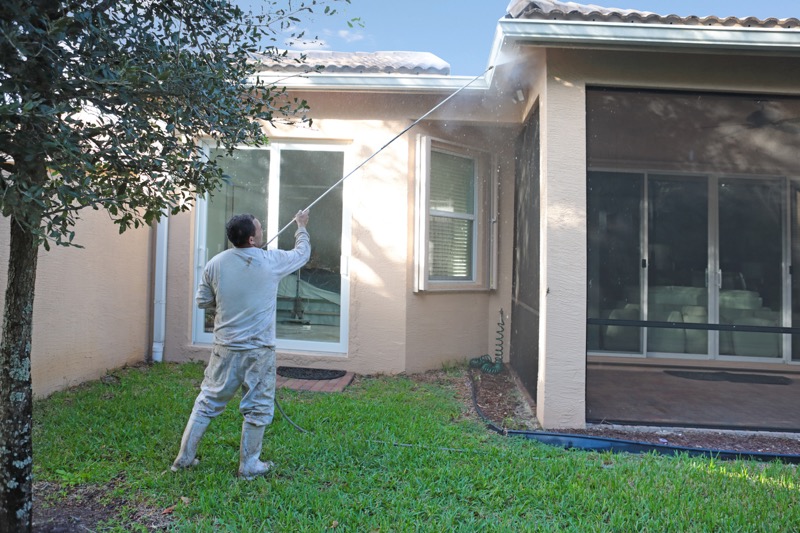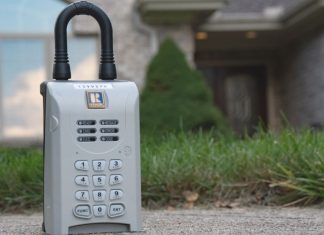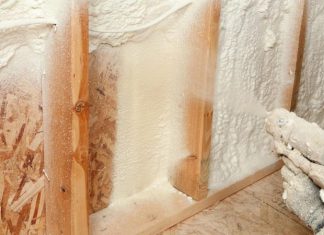Constructing or renovating a home is a dream for many people, and one of the most important aspects of any construction project is selecting the right materials. These days, more and more homeowners are choosing stucco as the go-to material for their siding, and that’s a good thing. Stucco is durable, provides several protective benefits, is easily maintained, and can even increase the value of your home. But, to keep that value high, stucco needs to be kept clean.
Unfortunately, stucco is prone to accumulating dust and dirt, making the exterior of a building look dirty, therefore reducing its curb appeal. When it comes to washing stucco, people are often confused about whether it’s okay to clean stucco using a pressure washer or not. Today’s article tackles the question: Can you pressure wash stucco?
Pressure Washing Stucco

The idea of pressure washing stucco is not as clear-cut as some experts suggest. Some claim there’s no problem with it at all. While others claim that a pressure washer will tear stucco off the wall. However, research indicates that it is possible to clean stucco with a pressure washer, as long as you take some precautions. Let’s explore further.
1. The Pressure Level (PSI – Pounds per Square Inch)
Concerns about a pressure washer damaging stucco aren’t totally unfounded. If you want to pressure wash your stucco, you need to understand the pressure level you’re using so that you don’t damage the material. Using excess pressure can lead to corrosion of the material leading to cracking of the walls. Using low pressure is much more desirable because you get a thorough clean without the risk of causing stucco damage.
Depending on the age of your stucco, you’ll need to adjust the PSI so that you do not harm the wall. The appropriate level of PSI should range between 1500 – 2500 PSI. When stucco is newly applied and is still strong, you can use 2500 PSI. However, as time goes on, consider lowering the PSI to reduce the risk of damage. During the first round of washing with soap, you can use a very low PSI. Later, when it’s time to rinse, you can slightly increase the PSI as you clear leftover suds and debris.
2. The Type of Chemicals Used
Using the appropriate pressure level isn’t the only factor you need to consider to conduct optimal stucco cleaning. Another component to consider is the chemical or detergent that you choose to mix with the water. For instance, different detergents are used to eliminate dirt such as oil, rust, or any substance on the stucco. Many manufacturers have come up with several detergents to help deal with each dirt. However, some detergents might be harmful to the materials of the stucco. That means you need to carefully select which chemicals you’re going to spray on your stucco. Keep in mind that some detergents might not be that harmful immediately after washing, but the longer you let it lie on the wall might contribute to its corrosiveness. That, therefore, forces you to ensure that you remove them from the walls as quickly as possible before they begin acting on the walls.
3. Surrounding Materials
It is advisable to protect anything that borders the walls made of stucco so that you don’t get a great clean on the one hand, and on the other hand, you destroy the materials around it. For example, you don’t want to get a crispy clean wall, but at the expense of your carefully tended flowers on your window sill. Be very careful when aiming your pressure washer, as you could easily damage things other than your stucco.
Summary
Keeping your stucco clean isn’t very tough to do, but you have to do it carefully, especially when using a pressure washer. But, using a pressure washer can be an effective and efficient method of washing stucco, as long as you take the necessary precaution to avoid causing unexpected damage. In the unfortunate case that your stucco does get damaged, contact professional contractors like Golden Trowel Stucco for the best stucco repairs.













